On my way to the office this morning my bag seemed especially heavy, the natural effect of stuffing an attaché with a MacBook Pro, iPad, iPhone and Kindle. I felt silly feeling it necessary to keep all these electronic gismos simultaneously latched onto my shoulder within seconds reach of my left hand, each ready to perform some specific task that required firing on its individual display and taking a few milliamp hours off its individual lithium ion battery pack.
 Each of these devices is especially good at performing certain types of tasks, to the point that it also feels silly to not use the tool best suited to the job. To a computer scientist all four of these are technically Turing machines–more commonly known as “computers”–but each has its own practical strength and weaknesses. And while carrying a single device solely by itself one becomes incredibly mobile, taking all four is not. I’m like a sleep-deprived mother of quadruplets sluggishly pushing a custom designed stroller through the grocery store. The monstrousity of brushed metal widgets, cables and wall warts I’m toting reminds me of that fictional car designed by Homer Simpson.
Each of these devices is especially good at performing certain types of tasks, to the point that it also feels silly to not use the tool best suited to the job. To a computer scientist all four of these are technically Turing machines–more commonly known as “computers”–but each has its own practical strength and weaknesses. And while carrying a single device solely by itself one becomes incredibly mobile, taking all four is not. I’m like a sleep-deprived mother of quadruplets sluggishly pushing a custom designed stroller through the grocery store. The monstrousity of brushed metal widgets, cables and wall warts I’m toting reminds me of that fictional car designed by Homer Simpson.
But such are the pro and cons of appliance computing. Not all of these hardware devices are technically needed on this particular Wednesday, but the combination of specialized functions provided by the union allows me a more productive day. I could have left at least one at home, provided that I had a reasonable amount of interoperability between them to shuffle data.
…
Stop. Oh god. I saw this coming the second Amazon announced they would use their own locked-down format (.azw/.mobi) for eBooks purchased through their store. (Aside: If you’re interested in Kindle encryption you may eventually find yourself at my KindleTools site for finding PIDs.) My biggest of fear with regards to the emerging ebook market is now in full swing. Not only are there subtle, often incompatible (and proprietary) differences in ebook data between reading application software, but most of the time I can’t even legally attempt it. It’s like Microsoft Office vs. Word Perfect vs Lotus Notes vs The People of Earth all over again.
Each content retailer is trying to be the de facto digital ebook data locker for the entire market, and the folks at the top of the food chain–most notably Amazon–have no business interest in supporting standardized (or at least conventionalized) data interchange with less popular consumer applications and devices. But why would they? If they can provide the content and the software and the hardware with a majority of the market, why not do everything possible to lock consumers into the monopoly? Here’s a painstakingly detailed scientific visualization of the current eBook market:

Let me make this clear: I am no stranger to paying for books. I read a LOT, and especially over the past year it hasn’t been unheard of for me to spend well over hundred dollars per month on eBook content alone, which I do for many reasons. Here’s the 8th-grade equation demostrating how I can scientifically demonstrate the value of this technology in my life:
Knowledge Gained (in the fictional unit of “knols“, K) x Ease of Future Reference (in the subjective economic unit of utils) / Content Cost (in dollars, $) x Total Consumption Time (in hours, 3600 x s)
This new unit of electronic book value that I’ll refer to as a Vebu–short for “value of ebookS unit”–reduces to this:
Vebu == knol utils per 3600 dollar seconds == uK/3600$s
In other words, we need to maximize the availability of meaningful information (knol utils) at a minimum of money and time (dollars hours) to achieve maximum value for our electronic virtual book libary, Vebu. A simple, unsophisticated yet meaningful quantity.
But here’s how this effed up market effects Vebu:
- I have no less than 7 different, largely incompatible pieces of eBook reader software on iPad alone, as of today. Kindle, iBooks, Borders, B&N, Stanza, Free Books and Wattpad. (Effect: lower u, lowering Vebu.)
- Borders, Barnes & Noble and the other brick-and-mortar vendors are freaking out, scaring they’ll become the next Blockbuster of the Netflix era. Each has their own application that works primarily with their own store, but not much else, forcing you to use their reader. Not all software is availble on all platforms, though, sometimes making lookups a major pain, and different retails of course carry different publishers, so it’s easy to unwittingly get sucked into all of them. (Effect: lower u and higher s, significantly lowering Vebu.)
- None of the distributor reader apps are keen on “sharing” your content with friends/colleagues, forcing others to re-purchase content you should have been able to at least “lend” to them in the freakin’ first place. (Effect: higher $, lowering Vebu.)
- O’Reilly, PragProg and other publishers don’t think the major distributors should be necessary, and some are leading the charge buy allowing you to directly purchase digital editions in a variety of formats. This is fine–I have no major qualms about this–but since most readers applications are trying to push you to the store of the vendor that wrote the apps, importing data can be a headache. (Effect: higher s, lowering Vebu.)
- Amazon, already having a huge content delivery infrastructure, offers propriety features such as cross-device synchronization of bookmarks and highlights that isn’t as good in others. The Kindle hardware will also read to you in the car, but they only sync with Amazon services; Apple’s iBooks/iTunes is better with PDFs but doesn’t have text-to-speach; Stanza aggregates many different content sources but isn’t as great with commercial stuff… everything has distinct pros and cons. They’re all different and I have to use all of them because they can’t/won’t talk to each other and I can never remember which damn content locker to which I committed my stuff. (Effect: lower u, higher s, significantly lowering Vebu.)
- The problem grows exponentially greater as more retailers, publishers, application developers, and independent authors enter the market, intentionally building walls that consumers have no interest in observing.
Here’s what needs to happen.
If you’re Amazon, Borders, B&N, or really any retailer that is gung-ho about becoming the provider of individual data lockers, that’s fine, but you need to give us the key. It’s understandable that you’re reluctant to open up your formats in a way that could be consumed in ways you can’t control, but consider this: if you never figure out how to allow publisher content to cross application and retailer boundaries, you are effictively capping Vebu to artifically low levels. If you instead focus on optimizing all the variables instead of restraining them, you’ll have a platform unmatched even by Amazon. I, for one, would switch to it in a heartbeat.


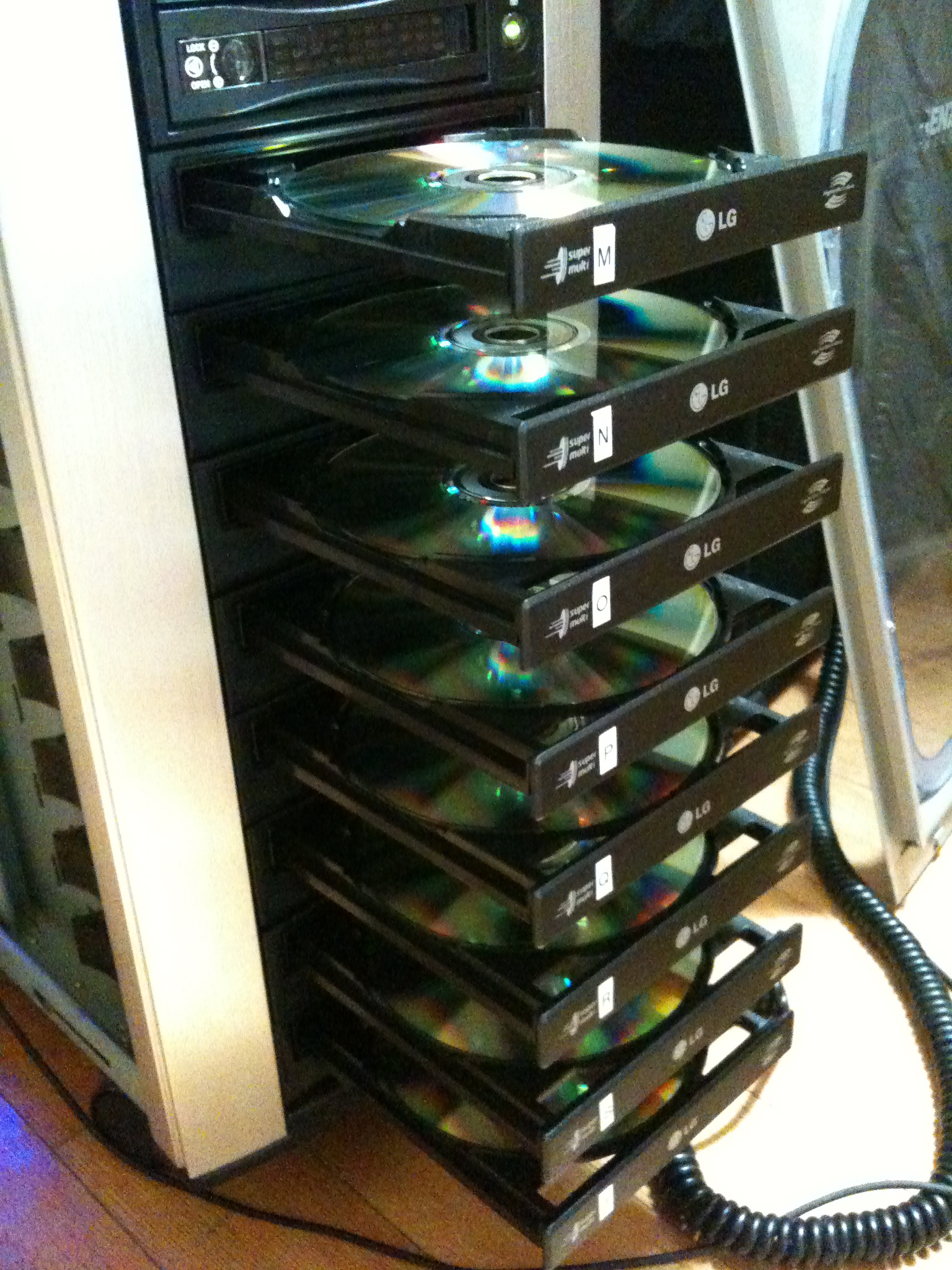
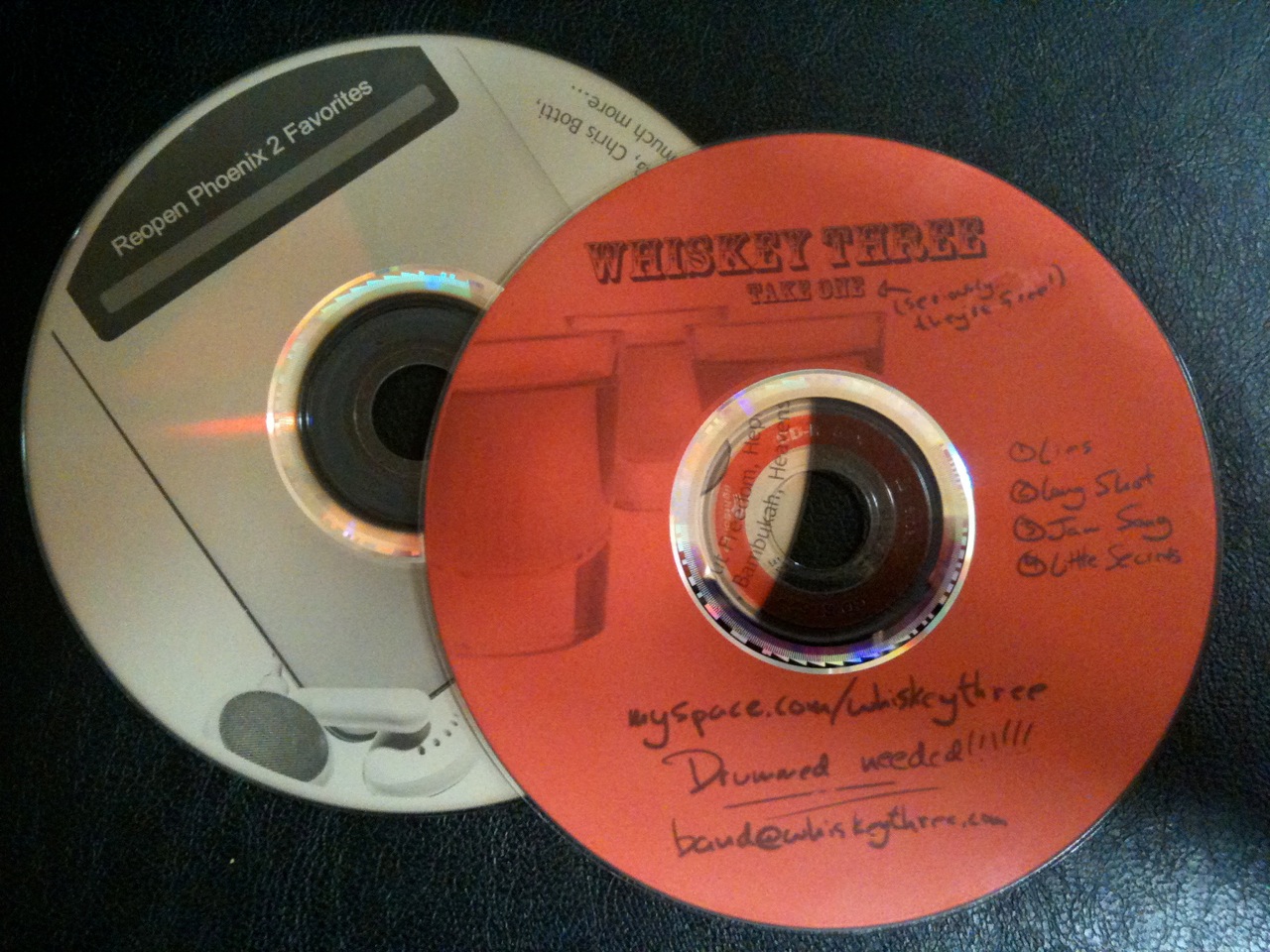
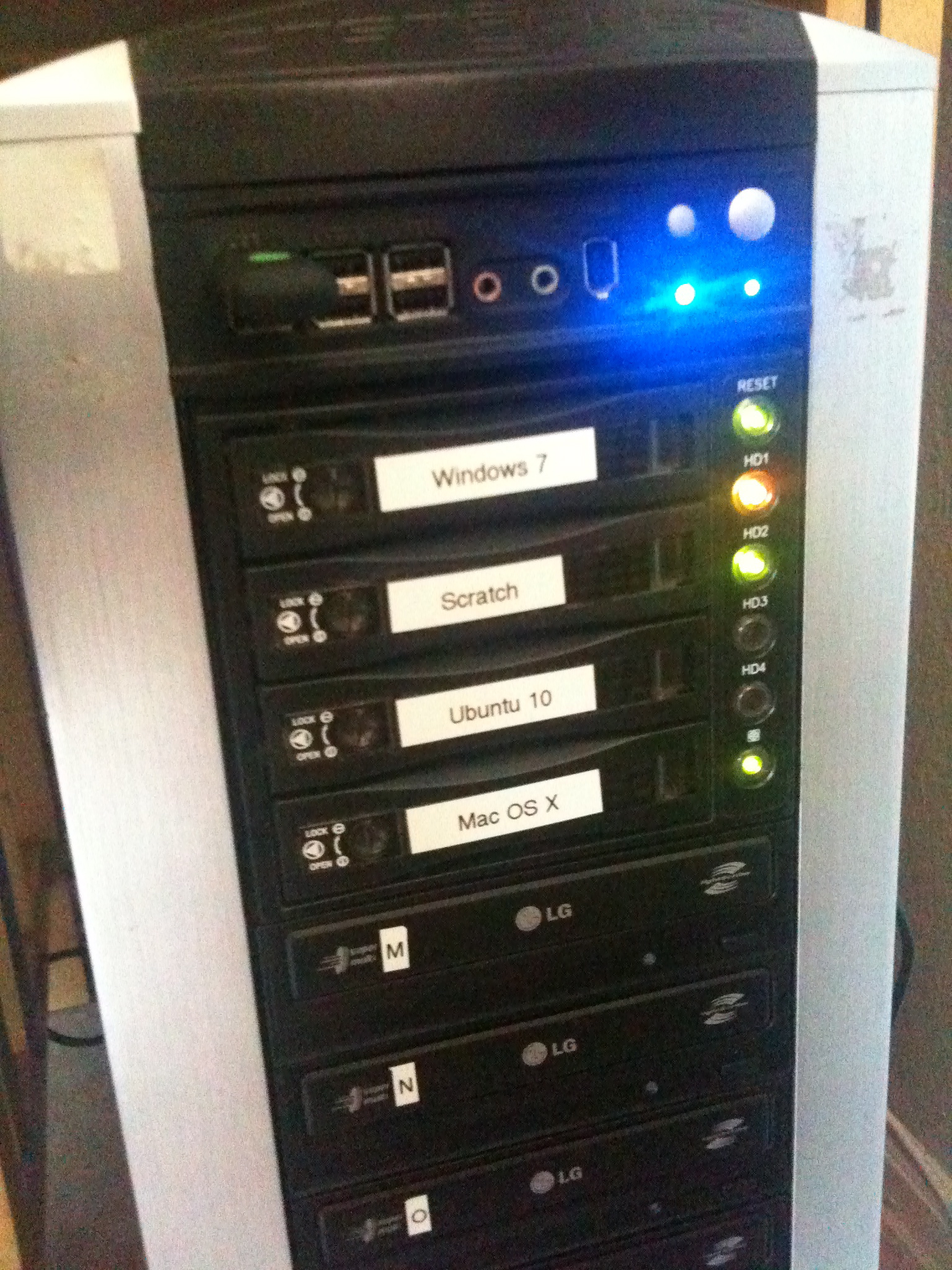
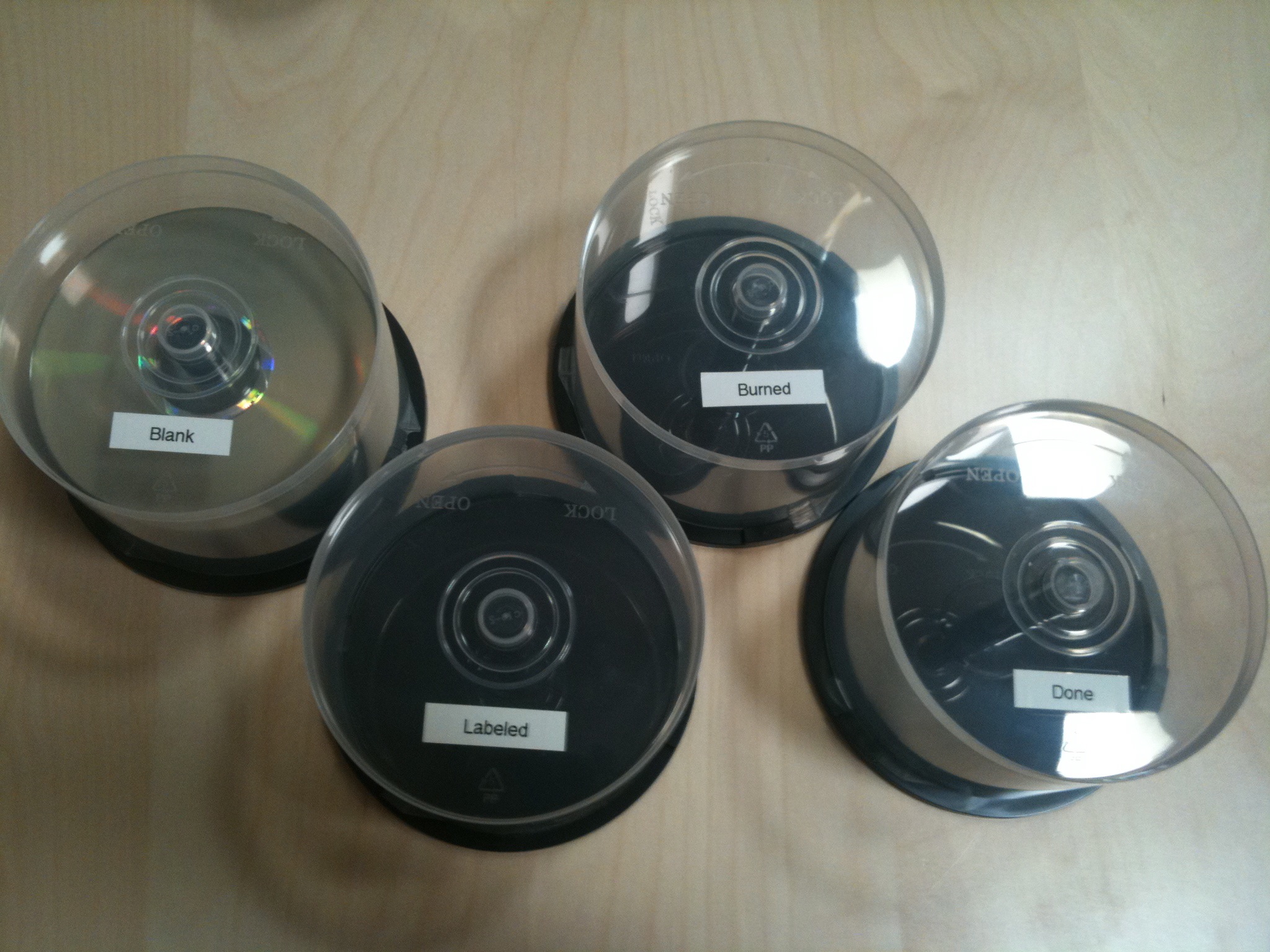
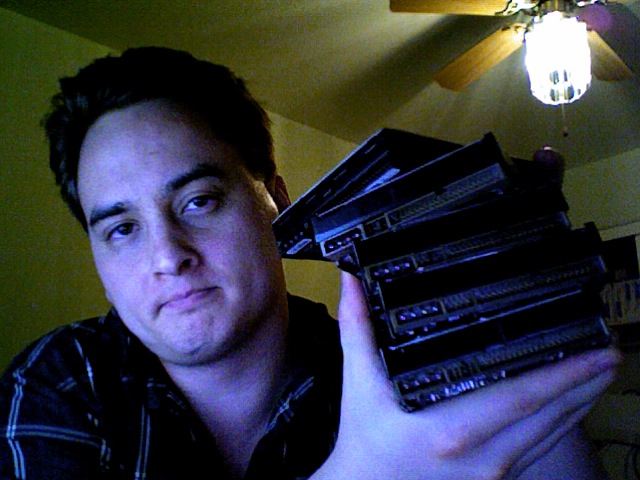 It’s Friday, 10pm, and I’m not a happy camper. This picture is me holding a pile of ordinary hard drives I keep on my home desk. They are cycling backup drives and are not in any way frequently used. Four are Seagate Barracudas–one of which I’ve already had replaced–and the fifth a Maxtor DiamondMax. The oldest of the bunch appears to be from 2002 and all are PATA 200-250GB models.
It’s Friday, 10pm, and I’m not a happy camper. This picture is me holding a pile of ordinary hard drives I keep on my home desk. They are cycling backup drives and are not in any way frequently used. Four are Seagate Barracudas–one of which I’ve already had replaced–and the fifth a Maxtor DiamondMax. The oldest of the bunch appears to be from 2002 and all are PATA 200-250GB models.